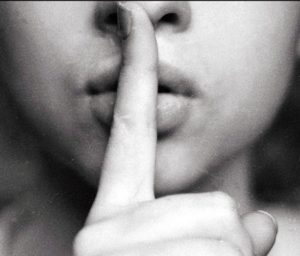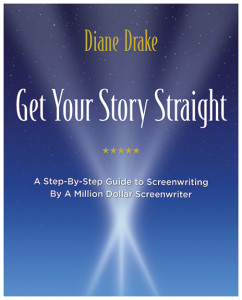
A problem I frequently come across as a screenwriting consultant and instructor is the tendency of writers to overwrite and to include too much on-the-nose exposition. This can quickly mark as script as amateurish, whereas its opposite—effective use of subtext— almost instantly conveys a more sophisticated and polished level of screenwriting.
So, before I go any further, let’s define the term. Webster’s defines subtext as: “the implicit or metaphorical meaning (as of a literary text).”
Wikipedia’s definition is a bit broader and, I think, more relevant here: “Subtext is any content of a creative work which is not announced explicitly by the characters or author, but is implicit or becomes something understood by the observer of the work as the production unfolds.”
Effectively communicating this way is one of the more challenging tasks of a writer; to show enough to let the reader/audience put things together for themselves, and in the process make them really feel something. It’s where the real artistry comes in and can immediately help elevate your writing, and thus a reader’s perception of it.
Now, if there were some one-size-fits-all, sure-fire formula for how to do this, we’d all use it. The bad news is, there is not. The good news is, by paying attention to this element and utilizing some of the strategies outlined below you can, I think, fairly quickly up your writing game.
1) DON’T SPEAK! DON’T SPEAK!
You know how when a joke is over-explained it’s suddenly no longer funny? That’s because the laugh is quite often in what isn’t said. It’s in the gap between what an artful comedian sets up and what you then supply yourself, that’s where the fun is. To illustrate, here’s one of my favorite jokes:
Question: “How many development execs does it take to change a lightbulb?”
Answer: “Does it have to be a lightbulb?”
Now, obviously the joke is in the fact that it’s making fun of development execs and their penchant for wanting to change everything, right down to the premise of the joke itself. But if you spell all that out, it’s not so amusing any more. The joke relies on the listener’s understanding of the business and their ability to put these things together for themselves.
A classic example of this are the brilliant stand-up comedy routines of Bob Newhart, (and if you’re not familiar with them, I’ll get you started with the genius “Abraham Lincoln vs. Madison Ave” – https://www.youtube.com/watch?v=dcjz7VAljYs). One of the unique conceits of Newhart’s timeless stand-up work is that all his routines feature a one-sided conversation. But because he so effectively sets up what we do hear, a great deal of the hilarity comes from our imagining what’s being said on the other end; that is, it comes from what we don’t hear.
And the same goes for drama. I believe that real emotion— in this case, the kind that makes you tear up rather than laugh— is conveyed mainly in the gaps, in what we’re allowed to deduce and put together for ourselves. If everything is all spelled out in capital letters, if we’re not allowed to use our own powers of perception to infer what is meant, and often unsaid, we tend to be less emotionally engaged.
2) LESS IS MORE
Sometimes just boiling things down can immediately improve them. For example, in CASABLANCA, what if instead of saying, “We’ll always have Paris.” Rick said, “You know, Ilsa, it’s a shame that we can’t be together, but I need to be noble and you need to stick with the Czechoslovakian do-gooder, so don’t forget what a good time we had in Paris, and when you’re bummed out, think about that.”
I mean, it’s effectively the same sentiment and information, right? But the writers of CASABLANCA say it in four words (five, if you count the contraction.) So, sometimes simply by really condensing what you want— that is, what your characters want— to say, down to only what is essential, you can elevate your work.
3) SHOW, DON’T TELL
If you’ve been at screenwriting for any length of time, I imagine you’re familiar with this maxim. We all know the difference between being told about something versus seeing it happen for ourselves. This is the distinction on the page. It’s much more powerful for us to see someone hurt someone else, see the tiny little moments of connection (or lack of it) where two people fall in or out of love, etc., rather than hear them tell someone else about it.
Also, don’t forget film is a visual medium, we’re going to see these characters and their expressions, environment, etc., on screen, so take advantage of the form, be “cinematic.” And take advantage of the fact that you can condense time. You can cut to, cut away, and most importantly, cut the chaff. You can often significantly improve a script by simply leaving things out. Regarding scene writing, as the saying goes, “arrive late and leave early.”
4) TAKE IT STEP-BY-STEP
When you start out writing a screenplay what you want to do first is just get through that rough draft. Don’t worry too much about being artful. If artfulness comes to you in the moment, fantastic. But if not, if you can’t seem to find the most elegant and clever way of communicating what you need your characters to communicate, don’t let that bog you down or stop you. Just get the broad strokes down, what needs to happen, what needs to be conveyed in each scene in terms of character development and moving the story forward. And if the dialogue is bald-faced in the moment in order to do that, if it’s overwritten or clunky, so be it.
BUT— THEN— go back through your draft with a red pencil with a specific eye to these issues. Flag any place where your characters are speaking on-the-nose or where the story comes to a halt as they feed us too much exposition. Also redline any place they’re over explaining, or where they’re talking about something rather than, you, the writer, showing it to us as it happens. Then see if you can apply some of the principles and strategies outlined above and thus be a little more oblique in your story-telling. If you even just manage to cut any extraneous dialogue down to its essence, to use fewer words, you’ll already be ahead of the game. And if you can come up with a way to say something simply visually, symbolically, or even downright poetically, bonus points. Find places and opportunities where you can tell us without quite telling us. I promise your readers will thank you.
For more screenwriting tips and advice, check out my book, GET YOUR STORY STRAIGHT


Wow! This is truly one of the most helpful blogs I have read in a while. I love the literal examples… Especially “we will always have Paris”.. I understood in that one line what you mean. This is something I have been trying to understand better! And from this blog I think I have finally GOT IT! can’t wait to go rewrite. 🙂 thanks Diane!
Thanks very much, Eve! I’m so happy to hear this piece was helpful to you!
This is the biggest problem in my writing, making the set-ups artful. In comedy it’s easier for me to have an inexact funny vibe; dramatic set-up is so precise I am never sure if I’ve said one word too many or if I’ve been too vague and ineffective. I just pinned this over my desk as a reminder:
“If you manage to cut any extraneous dialogue down to its essence, to use fewer words, you’ll already be ahead of the game. And if you can come up with a way to say something simply visually, symbolically, or even downright poetically, bonus points.”
Very helpful article. Thanks.
Thanks so much, Martin. And I know what you mean, I find writing drama more challenging as well, it’s harder for me to “hear” it and there’s less an element of rhythm/timing than there is in comedy. This is where I think remembering that “less is more” maxim can be especially helpful, I really think brevity (ok, selective brevity) is key (well, one of the keys. ; )